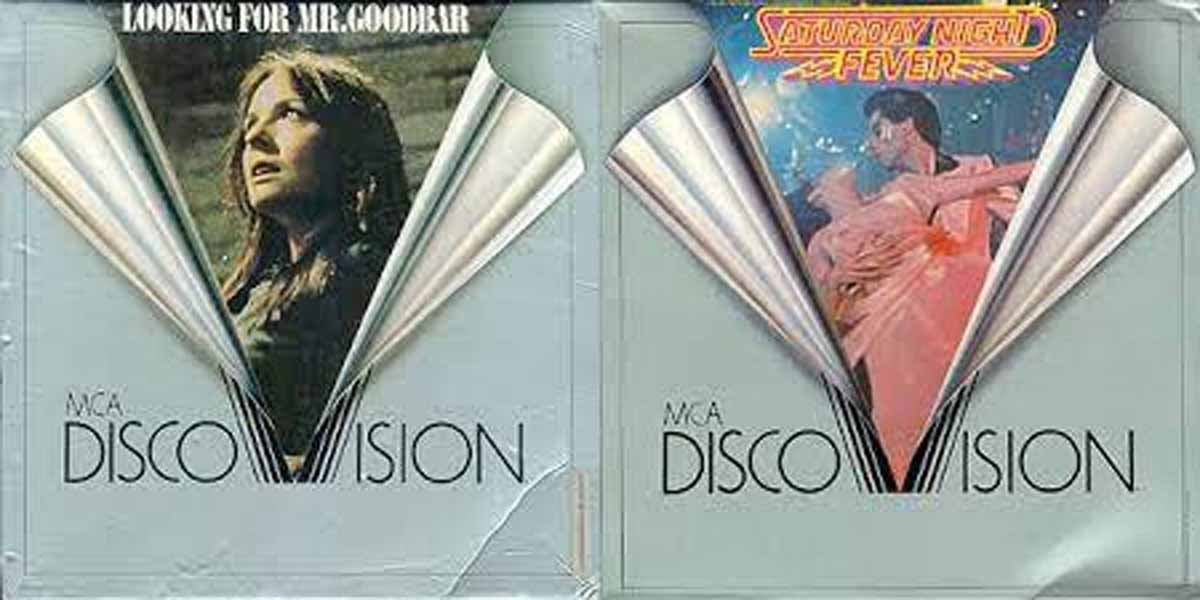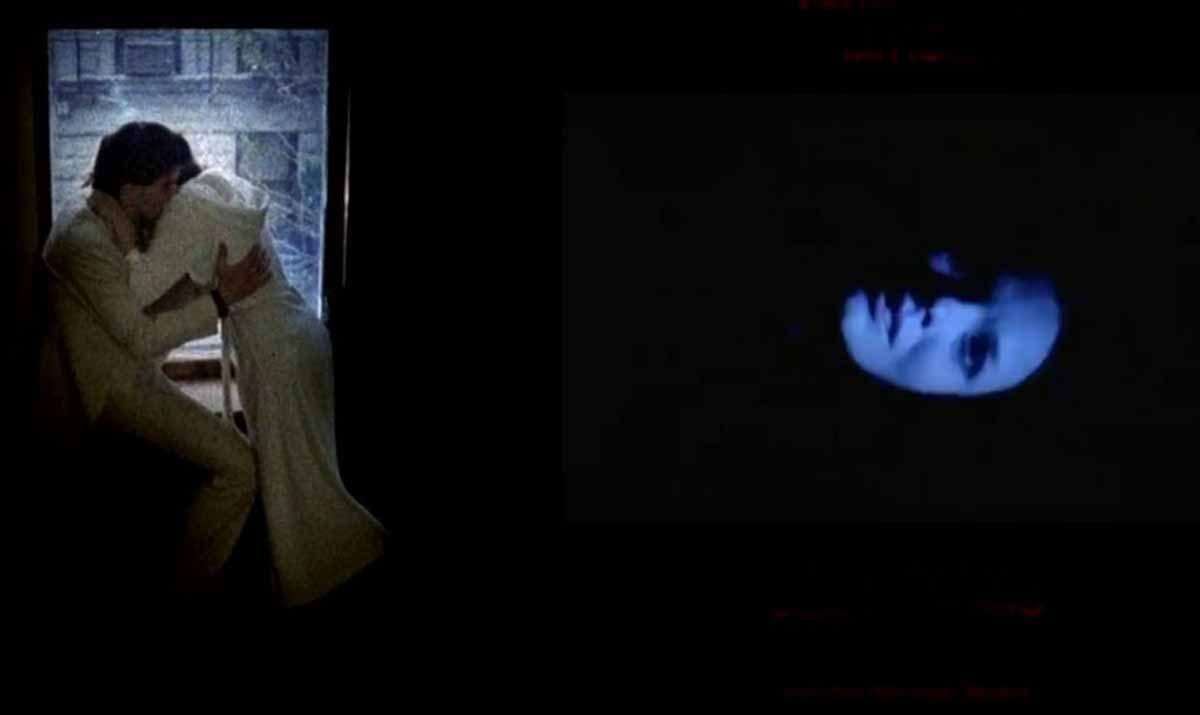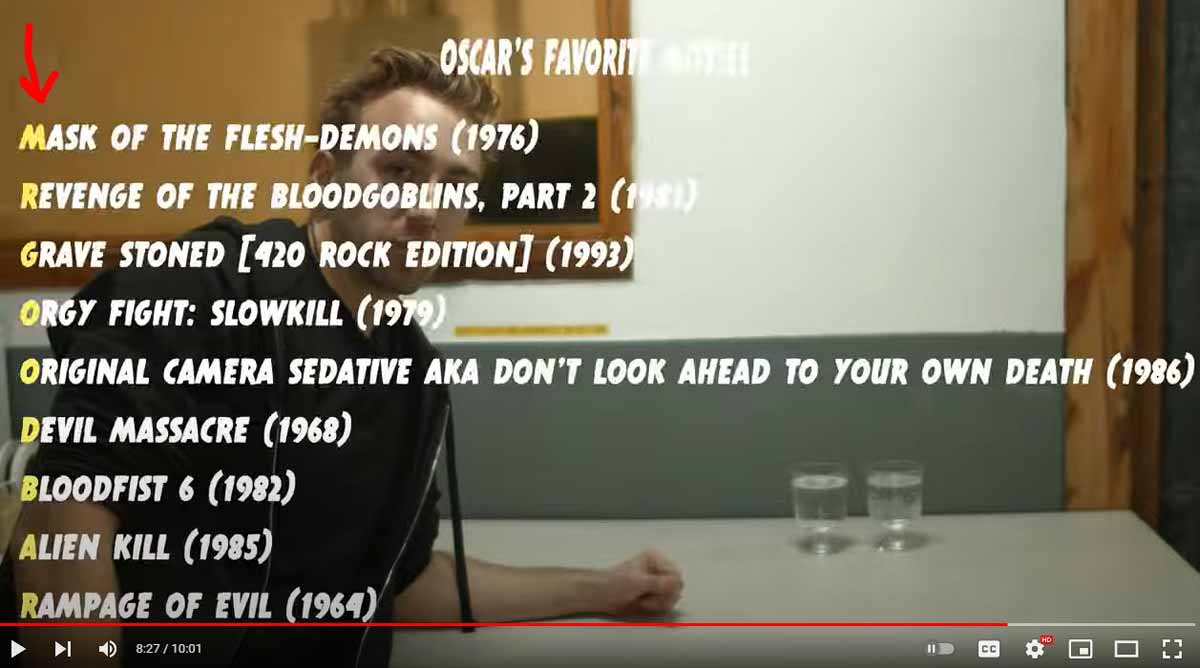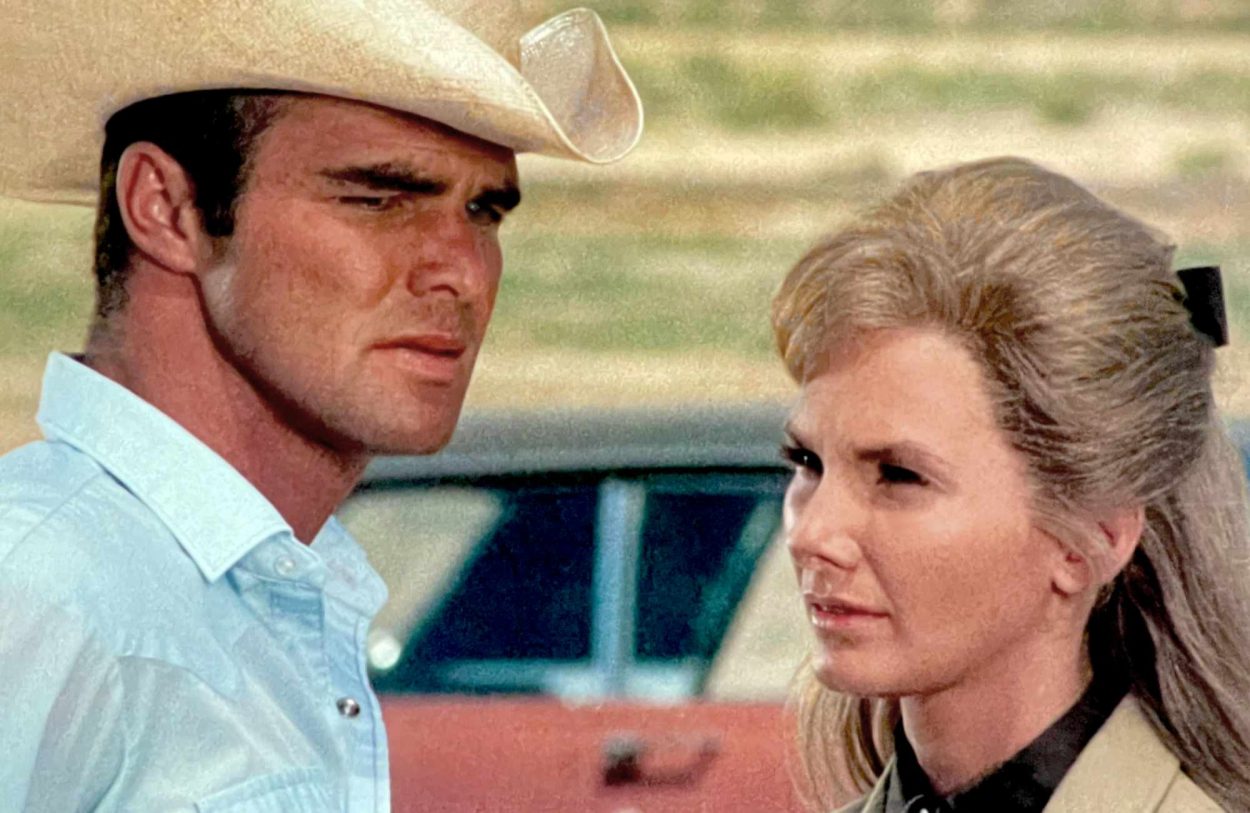In 1977, Paramount released a startling, gripping drama based on true details in New York City. It was about a young person from a stifling Catholic family living in the shadow of a “perfect” older sibling who is revealed to have cracks in their facade as well. Someone who only finds fulfillment in dark nightclubs where antediluvian attitudes about sexually active women run rampant. And while the film was filled with upbeat, wall-to-wall anthemic dance music on its soundtrack, the protagonist’s trajectory goes into darker territory that results in sexual assault and death. For their performance, the lead star received a Golden Globe nomination.
Actually, Paramount released two such dramas with this description in 1977. One was a respectably performing hit that has since faded from the general cultural consciousness. That was Richard Brooks’ Looking for Mr. Goodbar with Diane Keaton. The other became a worldwide phenomenon whose impact continues into the present day. That was John Badham’s Saturday Night Fever with John Travolta. When the specific details of each film, including their origins and ambitions, are explored, it’s easy to see how this schism happened. But considering the number of overlaps between them, their canonical gulf feels like watching twins separated and observed in an experiment.

To ruefully borrow prose from another well-known Paramount release, Looking for Mr. Goodbar is the story of a 28 year old girl who died. In the early hours of January 2, 1973, Roseann Quinn, a graduate student halfway to her master’s degree in teaching the deaf, was stabbed to death by a stranger she had invited to her apartment after meeting him during a New Year’s party at her favorite bar. For weeks, the press was simultaneously covering the search for the fugitive killer, who had attempted to hide his tacks, and publishing sensationalized stories of Quinn’s private behavior, involving several one-night-stands. Novelist Judith Rossner had written an article about Quinn and the incidents leading to her murder, but after Esquire magazine declined to publish it on legal grounds, Rossner reworked her material into a roman a clef fiction novel titled Looking for Mr. Goodbar, published June 2, 1975. Before the book’s release, Paramount purchased film rights for $250,000. 20 days after its release, it began a 36 week run on the New York Times best seller list, spending three weeks at #1, and selling over 4 million copies, putting it in the top 5 novels of the year.
When the film adaptation was ready for release on October 19, 1977, Goodbar, at least in the U.S., effectively sold itself. The actual case of Roseann Quinn was still haunting the public. The title had already become a proto-meme – in Rossner’s book, “Mr. Goodbar” is the name of the singles bar protagonist Theresa Dunn frequents – and it quickly became slang for a one-night-stand, or a forbidden thrill (in the film, Dunn shoplifts candy bars for fun), or a dangerous man; lots of articles warned women about “How to spot and get away from a ‘Mr. Goodbar.’” Diane Keaton, well-liked from playing Kay Adams in The Godfather films, and already receiving awards talk for her earlier role that year in Annie Hall, was receiving her first instance of headlining a movie without sharing the bill with a comparable male actor. Thus, the initial stateside advertising for Goodbar had no tagline, the studio bullish enough on the reputation of the novel and its leading star to draw in viewers. In foreign territories where neither the Quinn case or the book was as well-known, there was ad copy selling the inherent sex and intrigue: “To the children she taught, Theresa brought warmth and hope. To the men she met in bars, Theresa was easy. All kinds of people loved Theresa.” In a 1980 Australian pairing with American Gigolo, the copywriters got even more blunt: “She’s a good time girl by night. She gives men anything they want” Even the theatrical trailer took a radical step of offering no dialogue moments or outside narration to set the stage, only teasing out-of-context clips and stills of the cast scored to snatches of the popular dance songs on its soundtrack.
Meanwhile, pioneering UK rock journalist Nik Cohn, on his first visit to America, was enlisted by New York magazine in early 1976 to document the burgeoning movement of what became known as “disco,” nightclubs with elaborate lighting and inventive DJs playing beat-heavy music, frequented dominantly by Black, Hispanic, and gay patrons, but also a surprising amount of blue collar Italians, who rarely co-existed well with the primary demographic. Cohn’s article, “Tribal Rites of the New Saturday Night,” ostensibly followed a prominent regular at the Brooklyn disco 2001 Odyssey and what being a big shot there meant to the rest of his conventional daily life. The article drew the attention of record mogul and rising film producer Robert Stigwood, who optioned it, and signed young TV star John Travolta, at that time only having feature credits in The Devil’s Rain and Carrie, to a $1 million 3 picture deal, before taking the package to Paramount. 20 years later, Cohn admitted that while he did make multiple visits to the disco, and found a subject he attempted to profile, the entire article was a work of fiction based on his own experiences as a youth in late ‘60s England.
As a low-budget production with only a TV star as the lead, Paramount likely first envisioned Saturday Night Fever as a simple programmer they could release anytime, in comparison to larger prestige projects they had in the works for 1977, which included William Friedkin’s Sorcerer, Bernardo Bertolucci’s 1900, and Looking for Mr. Goodbar. Production issues, including neighborhood vandalism and a director change from John G. Avildsen to John Badham, may have raised concerns. But by the time executives saw a finished cut, including a hastily-assembled song score by Stigwood’s most popular label act the Bee Gees, confidence was at a high, and it was slated for a high-profile Christmas release on December 16. In September, the studio dropped an alluring theatrical teaser showing bits of the opening scene of Travolta as 19 year old Tony Manero strutting down a busy Brooklyn street, in tandem with a now immortal poster of him posing as if an Olympian god on a dance floor with a question over his head, “Where do you go when the record is over?” Concurrently, RSO released the first Bee Gees single from the film, “How Deep is Your Love,” before the album was even ready. A longer follow-up trailer took a then-unusual step of promoting the RSO soundtrack album, which would be released a month in advance of the film on November 15.
While both movies were hits, it’s not difficult to learn why Fever surpassed Goodbar with moviegoers, in the moment and over the years. Goodbar had stellar reviews, but it was positioned as a tony literary adaptation and a “woman’s picture,” while Fever was that cherished “four quadrant” movie, an event that needed, demanded, to be seen by everyone. There was only a malleable 8 year difference between Keaton and Travolta, but Keaton was already perceived as a sensible adult while Travolta still had the lure of a sexy menacing youth. Goodbar’s soundtrack was full of great songs, but they were somewhat old and played-out (The newest song, Thelma Houston’s “Don’t Leave Me This Way,” had reached #1 in April, too early to be strategically linked to the release), whereas when Fever opened, “How Deep is Your Love” was already a #1 Billboard hit, and as the soundtrack album was breaking sales records, it kept yielding #1 singles all the way to May 1978. Both stories take a dim view of the double standard about sexual desire between the genders, but Goodbar quickly picked up a reputation as a Styxian-river morality play while Fever was perceived (wrongly) as having a “boys will be boys” mindset. And while both stories went to ugly places that continue to disturb first-time viewers today, when the credits started rolling, Theresa Dunn was consumed by the darkness while Tony Manero escaped; catharsis always wins more hearts. The only interval where the two films were completely equal was awards season: Keaton and Travolta received Golden Globe and New York Film Critics’ Circle acting nominations, and the films’ respective writers got WGA nominations, and all of them left empty-handed.
Yet, when contemplated together, or better, watched in tandem, the two films make a fascinating He Said/She Said combination, or a Sliding Doors-style timeline exploration, of the possibilities awaiting its characters. Though there are years separating them, Theresa Dunn lives the same independent self-sustaining life away from her family that Tony Manero’s idealized dance partner Stephanie Mangano enjoys in NYC, safely beyond Tony’s Bay Ridge neighborhood. Theresa has a fling with a younger lover named, well, Tony (played by Richard Gere, later to replace Travolta in American Gigolo), who much like his Brooklyn doppelganger, is charming but vain and thoughtless. As Tony Manero discovers later on, Stephanie has an older lover on the side, in the same manner that Theresa keeps company with caseworker James when her Tony is not around. James’ objection to Theresa’s unwillingness to commit to him is a slightly more genteel take on the “are you a good girl or a [pig]” binary Tony Manero and his acolytes adhere to. The casual homophobia and racism Tony and his Brooklyn pals espouse (including within earshot of his supportive DJ friend, played by real-life bisexual musician Sir Monti Rock III) is the same kind of mindset that curdles within and breaks Theresa’s final hookup Gary. In effect, Goodbar’s Tony (and Gary) is how Fever’s Tony could have turned out on his initial path, a violent sociopath doing real emotional damage to women, and Stephanie is what Theresa could have been had she chosen to just go home after her lowest point with a man; sadly, only random luck saves one character and ends the other.

For the first 20 years after their release, while Fever had the bigger historical impact, Goodbar had a reasonably easy availability and presence in the canon to put it on a comparable level. Both films were released on cassette, laserdisc, and the ill-fated CED format, ABC aired each of them on prime time television, and both were sold to local stations in syndication packages. And they got frequently referenced in popular media – scene restagings in music videos, jokes on “The Simpsons”. However, Goodbar’s accessibility declined sharply beginning in 1997, when it received its last resolicitation on VHS, a format which was itself beginning a slow decline in favor of DVD, until studios stopped releasing new titles on tape altogether in 2006. Since then, it has never received an authorized DVD or BluRay release anywhere in the world. It is not available for streaming or online rental, and cable TV airings have been very sporadic. Even the soundtrack album, after a brief 1997 CD release, is out of print. Only the original Judith Rossner novel is still readily obtainable, with its current jacket art offering no connection to its film adaptation.
The most immediate reason for Goodbar’s fall into obscurity is a familiar one to savvy movie fans: needle-drop clearance. Due to ill-planned contractual language, both films, along with several other pop-song heavy Paramount releases of the ‘70s and ‘80s, could not initially get released on the rising DVD format until new licenses for those songs were made with their record companies, who, in turn often demanded new and exorbitant fees to reclear said recordings. For example, Saturday Night Fever finally got a DVD release in 2002, with its film music intact, but an archival “Behind the Music” episode on the film included as a bonus feature, removed all segments involving the Bee Gees to save costs. Meanwhile, an unnamed Paramount title from the 70s that never even got a VHS release has 7 songs by a much lesser-known artist than the Bee Gees, and at last report, the label requested $105,000 (or $15,000 per song) to reclear them, a dollar figure that, added on top of the standard costs of remastering, packaging, and solicitation, would make recouping the expense of releasing it to physical media very unlikely. Goodbar has 9 songs in the film, 6 of which are now owned by one label versus when they were first licensed, and even if the cost-per-song is not as high as $15,000, it’s clearly large enough that Paramount has been loath to pay it.
There may finally be light in the tunnel that isn’t just a mirrorball. On March 1 of this year, a respected independent BluRay label uploaded a video ostensibly about physical decay of film prints and how to detect and work around the damage in the process of scanning the material for eventual restoration and release. And in a subliminal flash frame, a list of the host’s favorite films was provided for savvy viewers to initially read.

Looking for Mr. Goodbar was a heartbreaking descent based in truth. Saturday Night Fever was an escapist aspiration based on a lie. For a time, it was easy for a viewer to be cognizent of both and choose which had greater resonance for them. Here’s to hoping that ease of awareness and access will return again.


